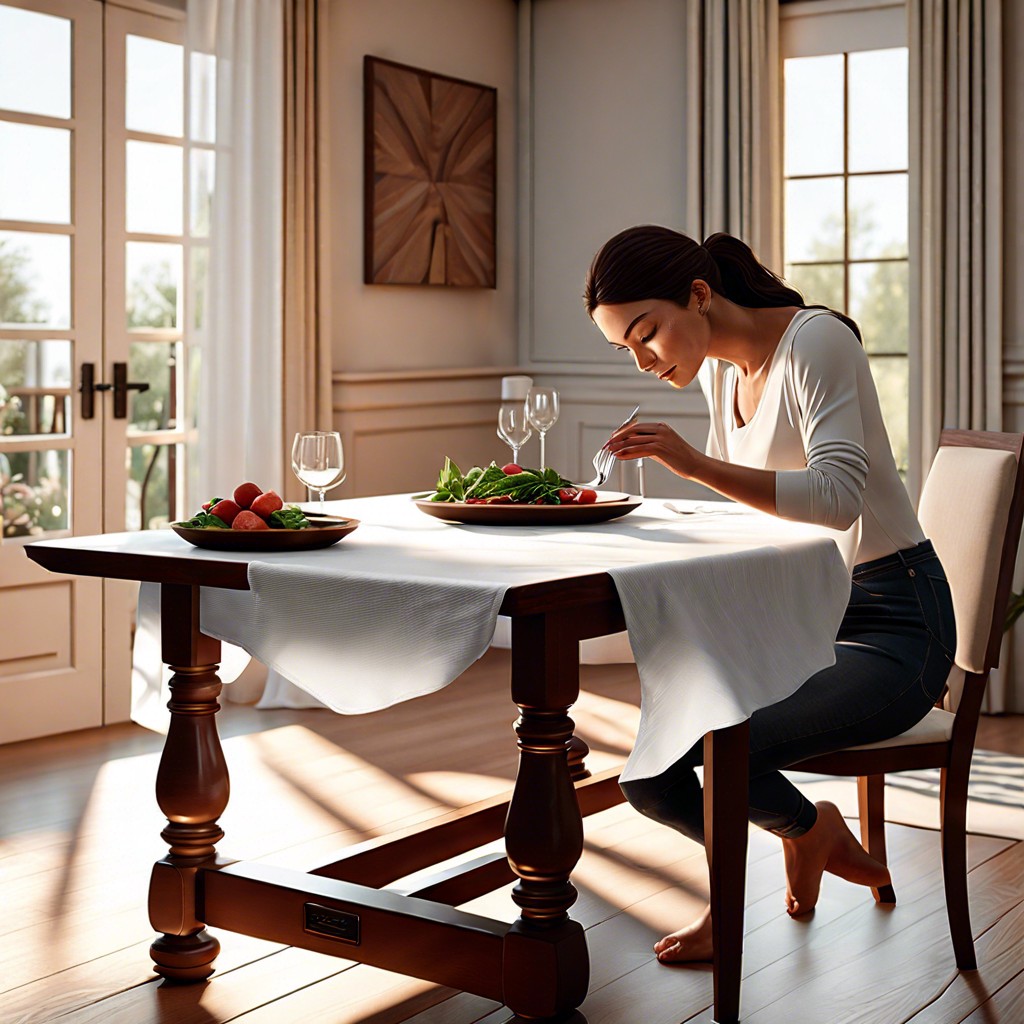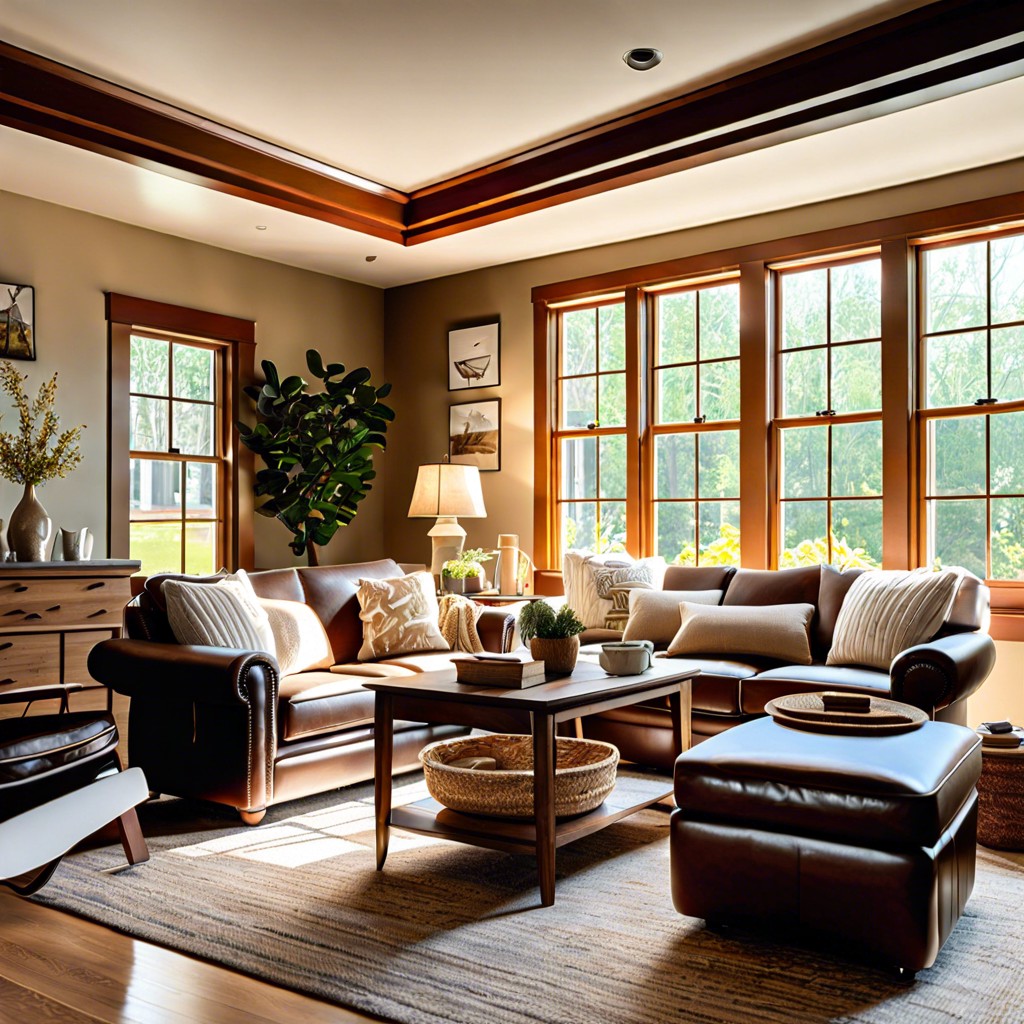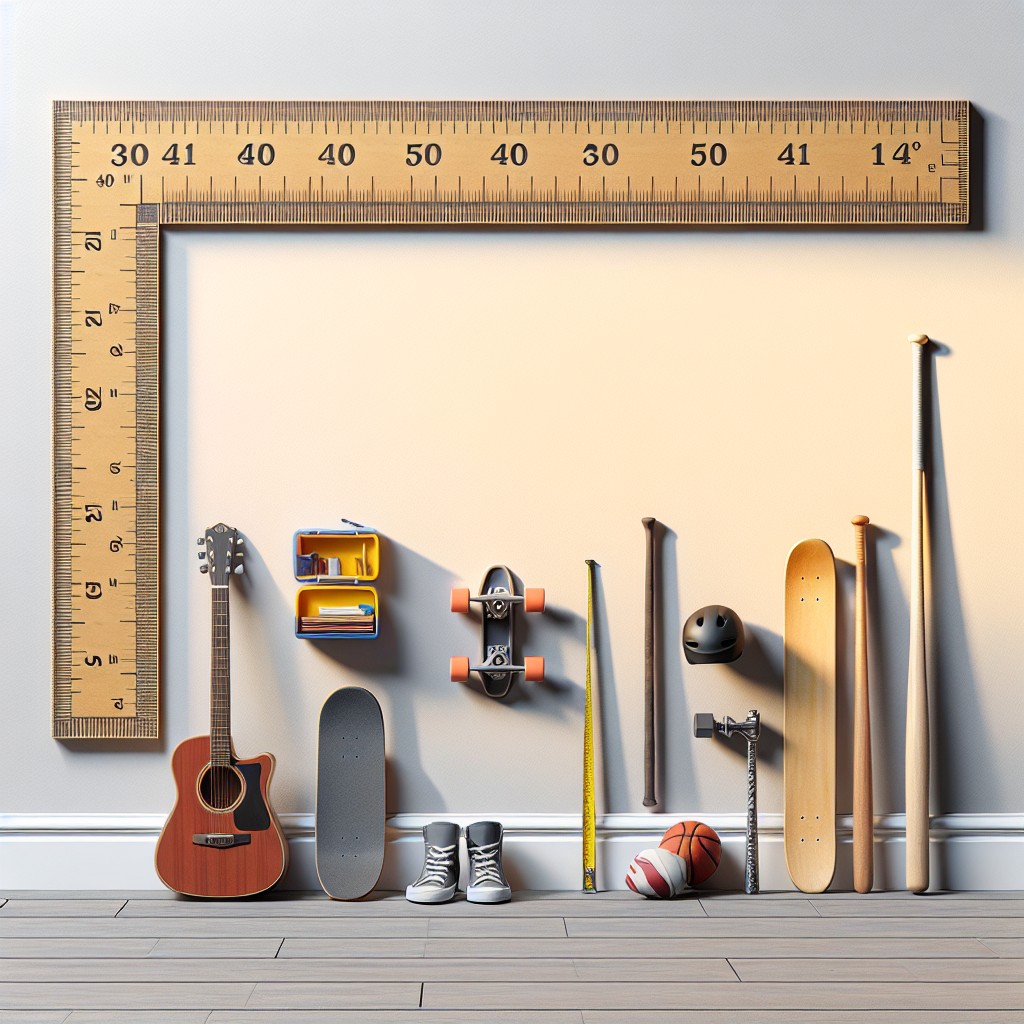Last updated on
Learn how to effectively clean your wood table and maintain its luster with simple steps and common household products.
Key takeaways:
- Clean your wood table weekly to prevent grime buildup.
- Use soft cloths, distilled water, and mild cleaners for cleaning.
- Dust with the grain of the wood to protect the finish.
- Remove stains with non-gel toothpaste, baking soda, or a walnut.
- Protect your table from heat, sunlight, and spills with coasters and placemats.
What's Inside
How Often to Clean Wood Furniture

Dusting your wooden table weekly goes a long way in maintaining its charm. This routine prevents the buildup of grime that can cloud the wood’s luster. While a light dusting is generally sufficient for regular care, a deeper clean monthly can work wonders. It involves a gentle wipe-down with a damp cloth followed by a quick buff with a dry one to bring out the shine.
However, life happens, and your table might be in the line of fire—think crayon-wielding kids or coffee spills. In such cases, a more immediate response is necessary. Quick action can prevent stains from setting in, saving you time and elbow grease down the line. Remember, over-cleaning or using harsh chemicals can be the arch-nemesis of wood furniture, so moderation is key. Keep things simple and your wood table will thank you with years of durable beauty.
What You Need
Gearing up for a cleaning session is half the battle. To make sure your wooden table stays in tiptop shape, having the right tools and cleaners on hand is essential. First off, grab some soft, clean cloths–microfiber works wonders for trapping dust and reducing the risk of scratching the surface. You’ll want distilled water, because tap water can contain minerals that may harm the finish. For a mild cleaning solution, mix equal parts white vinegar and water in a small container, or grab a bottle of commercial wood cleaner if you prefer. Wood polish or beeswax protects your table after cleaning, rejuvenating its luster. Don’t forget, for tricky spots or sticky residues, gentle use of fine steel wool can do the trick. Just remember, always follow up with polish to restore the wood’s moisture. Keep these items within arm’s reach and the battle against dirt and grime is halfway won! Remember, prevention is better than cure, so coasters and placemats should be non-negotiable to shield the wood from heat and spills.
Instructions for Routine Cleaning of Wood Furniture
Dusting is your first line of defense. Grab a soft, lint-free cloth or microfiber towel to trap particles. Avoid feather dusters as they can sometimes scratch the surface. Lightly dampen the cloth with water or a homemade cleaning solution—one part vinegar to ten parts water works wonders for removing grime without harsh chemicals.
When wiping, always follow the grain of the wood. The direction of the wood’s natural lines not only guides you but also protects the finish. Apply gentle pressure to tackle any stubborn spots. If the usual routine isn’t cutting it, consider using a mild soap with warm water, but always spot test first. Dip your cloth into the soapy solution, wring it out so it’s barely damp, and go over the surface.
Weekly wipe-downs do more than keep your table looking snappy. They add longevity to the piece. Always dry the surface after cleaning to prevent moisture from causing damage.
Once in a while, say every few months, it doesn’t hurt to buff in some quality furniture polish. Opt for wax-based over silicone-based, as the latter may create a buildup over time.
Remember, direct sunlight and heat sources are nemeses for wood furniture. Position your table away from prolonged exposure to the sun’s rays and heaters to prevent warping or splitting.
These simple steps can save you heaps of trouble and keep your wood table serving up style for years to come.
How to Remove Stains From Wood Furniture
Spills and mishaps leave their mark, but there’s no need to panic. For water rings, gently rub a dab of non-gel toothpaste with a soft cloth. Buff off with a clean cloth, watching as the ring says its goodbyes. For tougher stains, mix equal parts baking soda and toothpaste. Apply the paste to the stain with a soft cloth in a circular motion, then wipe clean with a damp cloth and dry immediately.
Accidental scratches can catch your eye for all the wrong reasons. No sweat. A walnut—yes, a walnut—can work wonders. Rub the meat over the scratch in a circular motion and watch it blend into the wood’s own hue like magic. For deeper scrapes, a touch of wood stain, applied with a cotton swab, can conceal the blemish; follow up by buffing with a soft cloth.
If white heat stains are your nemesis, throw in a little irony. Cover the stain with a cotton cloth and go over it with a warm iron, but keep it moving to avoid adding a new kind of mark. After a few passes, the heat stain typically fades, as if it took the hint and decided to clear out.
In all your efforts, treat your wood with respect. Scrubbing too hard or using harsh chemicals could leave you with a bigger problem than you started with. Always finish with a soft touch and kind words, because after all, wood furniture enjoys a gentle approach.
Tips for Maintaining Wood Furniture
Shielding your prized wood furniture from harm can feel like guarding a medieval castle from invading forces — spills, scratches, and the dreaded ring marks are the enemies at the gates. Fear not! With a few armor-like strategies, you can keep your wooden treasures in tip-top shape.
Let’s start with coasters. They’re the knights in shining armor for wood tables. Always slide a coaster under beverages to prevent moisture rings. It’s a simple habit that can save you a world of hassle. For an added layer of protection, consider using placemats or tablecloths during meals. They’re like a moat around your castle, keeping the messy spills of the feast safely at bay.
Next up, heat. Think of it as a fire-breathing dragon that can warp and damage the wood. To slay this beast, always place a trivet or another heat-resistant barrier under hot dishes and electronics. It’s like a shield deflecting the dragon’s fiery breath and keeping the kingdom, I mean table, safe.
Now let’s touch upon sunlight — the silent but steady archer aiming its fading arrows at your furniture. By drawing curtains or blinds during peak sunshine hours, you protect the wood’s color from fading. It’s as if you’ve pulled up the drawbridge just in time to block the barrage.
And, every so often, give your furniture a spa day — treat it to a nice wax or polish. This isn’t pomp and circumstance; it’s like rubbing a healing salve into the wood to keep it strong against the elements. Over time, this regular conditioning can prevent the wood from drying out and cracking — a fate as grim for a table as for a squire’s chapped hands.
Lastly, every castle has its secrets, and so does wood care: avoid harsh cleaners at all costs. They’re the traitors in the ranks, promising to clean but poised to strip away finishes and age your furniture prematurely. Stick to gentle cleaners specific for wood, and you will have allies in the cleanliness battle.
In essence, with a little foresight and small daily habits, your wood furniture can stand the test of time, aging as gracefully as an heirloom rose — resilient, aromatic, and always in bloom.





